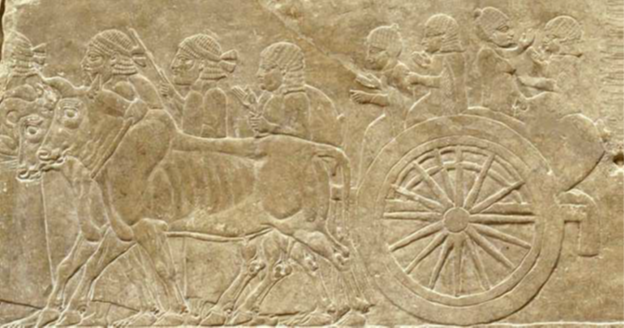They say the past never truly disappears—it just lies beneath our feet, waiting for the right question. This is one of those questions.
*************
In the rocky town of Kalat, nestled in Pakistan’s Balochistan province, lives Zahida Bibi, a Brahui schoolteacher with a quietly radical sense of belonging. When asked if she feels connected to the Dravidian languages of southern India, she doesn’t hesitate.
“I once heard Tamil on the radio,” she says with a soft smile. “It felt like a cousin’s voice. Strange, but familiar—like something old stirring in the bones.”
Zahida grew up listening to her grandfather’s tales of an ancestral land “where the soil is black and coconuts fall like rain.” At the time, it sounded like poetry. But much later, while flipping through a college textbook on South Asian languages, she encountered the word “Dravidian” and froze.
“It was like finding a word for something I had always felt but never named,” she recalls.
Though her formal education barely brushed against historical linguistics, Zahida took pride in the idea that her tongue, rarely recognized outside Pakistan, might share roots with one of the world’s oldest surviving languages.
“Maybe we didn’t come from there, maybe we just never left.”
Her words don’t serve as scientific proof—but they do offer an emotional anchor. For in the heart of this linguistic mystery lies a truth even linguists can’t deny: identities don’t only exist in data. They also live in memory, myth, and longing.
*************
In the dusty corridors of comparative linguistics and the forgotten ziggurats of ancient Elam, a controversial idea is gaining renewed traction. Could Tamil, one of the oldest surviving classical languages on Earth, have an ancestral link to Elamite, the extinct language once spoken in ancient southwestern Iran? Could this cryptic connection shed new light on the elusive script of the Indus Valley Civilization?
This is no idle speculation—it’s a tale of buried civilizations, enigmatic scripts, ancient migrations, and one of the longest-running linguistic cold cases in South Asia.
The Indus Valley Civilization (IVC), thriving between 2600–1900 BCE, left behind advanced urban centers and an undeciphered script etched onto thousands of seals. Meanwhile, to the west of the Persian Gulf, the Elamite civilization flourished in what is now southwestern Iran, with its own distinct language and culture.
The mystery? Elamite and Tamil show a surprising number of structural and lexical similarities despite this geographical divide. Some linguists have suggested that they may both belong to a hypothetical “Elamo-Dravidian” language family.
This idea, first proposed in earnest by the anthropologist David McAlpin in 1981, challenges the dominant narrative that South India’s Dravidian languages evolved in relative isolation. McAlpin posited that Elamite and Dravidian languages share around 20% of their lexicon, along with parallels in grammar and pronoun systems.
“The evidence is circumstantial but compelling,” says Dr. R. Balasubramaniam, a linguistic archaeologist based in Chennai. “McAlpin’s theory hasn’t been widely accepted, but it’s never been fully dismissed either—it keeps resurfacing because the puzzle remains unsolved.”
Dravidian languages, including Tamil, Telugu, Kannada, and Malayalam, are predominantly spoken in southern India today. But pockets of Brahui speakers—a Dravidian language—still exist in Pakistan’s Balochistan province, far removed from the south. Coincidence? Or migration trail?
Dr. Franklin Southworth, a renowned scholar of South Asian linguistics, writes that “there is no reason to assume the Dravidian speakers were always confined to South India.” His work suggests that the proto-Dravidian heartland may have extended into the northwestern subcontinent before Indo-Aryan migration.
This aligns with archaeological findings that suggest cultural continuity between the IVC and later Dravidian societies.
The geography fits a plausible narrative. Ancient Elam bordered the Iranian plateau, while trade between Mesopotamia, Elam, and the Indus Valley is well documented through excavated seals and artifacts. Maritime connections between the Indus ports like Lothal and Persian Gulf cities like Susa and Ur hint at potential cultural—and possibly linguistic—exchange.
“We know people were moving, trading, intermarrying. Why not languages evolving together?” posits Professor M.R. Venkatesan, an expert in Harappan culture at the University of Madurai.
However, critics argue the similarities between Elamite and Tamil may arise from linguistic universals or borrowings, not common ancestry. After all, a 20% lexical match can occur between unrelated languages through convergence or chance. Without more data—especially a deciphered Indus script—certainty remains elusive.
Here lies the Gordian knot. The Indus script, found on over 4,000 artifacts, remains unread. It is short, often pictographic, and lacks bilingual inscriptions like the Rosetta Stone, which helped crack Egyptian hieroglyphs.
Many scholars suspect the script encoded a Dravidian language. This “Dravidian Hypothesis,” championed by Asko Parpola and Iravatham Mahadevan, builds a bridge between linguistic and archaeological evidence, but its foundations are debated.
Parpola argues that signs representing common Dravidian words—like “fish” or “mountain”—occur repeatedly in meaningful ways. He draws on parallels from Old Tamil inscriptions and early Brahmi script. If true, the Harappans might indeed have spoken a proto-Dravidian tongue, possibly sharing roots with Elamite.
Yet without definitive decipherment, we remain in the dark. In the words of Mahadevan: “We have the lock. We don’t yet have the key.”
Linguistic theories are rarely just academic. In India, where language maps onto deep-seated cultural and political identities, linking Tamil to the IVC adds weight to longstanding claims of antiquity and continuity.
Some Tamil nationalists embrace the Elamite theory as a proud vindication of their language’s primacy. Others urge caution, warning against cultural appropriation or the oversimplification of complex migration histories.
“We must be careful not to impose modern identities on prehistoric peoples,” says Dr. Anjali Varma, a historian at Jawaharlal Nehru University. “Civilizations evolve, merge, vanish. So do languages.”
What can resolve this impasse?
New archaeological digs, especially around sites like Rakhigarhi in Haryana and Bhirrana in Punjab, might yield more evidence. Advances in computational linguistics and AI-driven script analysis are already making waves; some experimental projects have tried identifying semantic patterns in Indus texts using Tamil as a base.
Genetics could also help. A 2019 study published in Cell found no significant steppe ancestry in the ancient DNA of Indus Valley populations, potentially supporting the idea that their language was non-Indo-European—perhaps Dravidian?
Still, all these clues form a foggy mosaic, each tile raising more questions than it answers.
The past is whispering.
Could Tamil and Elamite be distant cousins, whispering across the millennia from Susa to Madurai? Or are we chasing a mirage woven by coincidence, shared commerce, and the mind’s yearning to find patterns?
Perhaps we’ll never know for sure. But to question, to investigate, to bridge continents and centuries in pursuit of understanding—that is what keeps ancient stories alive.
As long as the Indus script remains mute, the linguistic past of South Asia will remain a riddle, wrapped in a mystery, encoded on a shard of fired clay.
![]()

